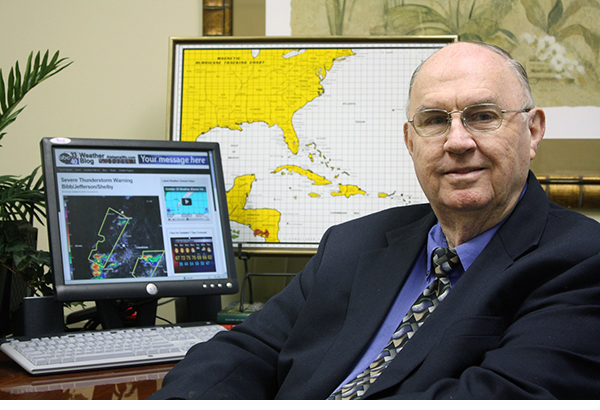How Lightning Forms? And How to Be Safe From It
(Credit: National Weather Service)
Lightning is a fascinating but dangerous weather phenomenon. The odds of getting struck by lightning are estimated to be 1 in 600,000. The United States records about 25 million lightning strikes per year, and it is typically around this time of the year, during the late spring and summer months, that lightning strikes most frequently occur. Although fatalities caused by lightning have decreased over the past few decades, it continues to be one of the top weather-related killers in the United States.
The formation of a single lightning bolt first begins when the sun heats the air above the ground and pockets of warm air begin to rise into the atmosphere. At a certain level, the warm air cools and condenses into puffy cumulus clouds. As warm air continues to rise, the cloud grows into a “towering” cumulus as it expands vertically into the atmosphere. Once the cloud hits the top of the troposphere (the lowest level of the atmosphere), the top of the cloud starts to take an anvil-like shape showing that the thunderstorms has hit the mature stage.
The updraft of the thunderstorm lifts water droplets from the bottom of the cloud to the top. This is when different types of precipitation will start to form within the thunderstorm. As you increase in height inside the cloud, the temperature becomes cooler and the precipitation will change from liquid droplets to solid particles. Melted hail and rain will be located in the lower levels, a mixture of hail and ice crystals in the mid-levels, and primarily ice crystals in the upper levels.
Air movements inside the storm will cause collisions between the different types of precipitation and this causes the precipitation to take on either a positive charge or a negative charge. Light precipitation, typically the ice crystals at the top of the cloud, will become positively charged. While the heavier-type precipitation, like hail, will take on a negative charge. When both positive and negative charges become too great, it creates a giant spark of electricity inside the cloud forming a lightning bolt.
As most of lightning occurs within the cloud, it can happen where the lightning bolt strikes the Earth’s surface. This is what is called “cloud to ground” lightning. This occurs when a build-up of positively charged particles near the ground interacts with the negatively charged particles at the base of the thunderstorm. A connection is made between both particles and a lightning bolt strikes the surface.
Anything on the earth’s surface can become a conductor for lightning; trees, buildings, powerlines, even people. A person can become a conductor for lightning if you are standing in the area with the most positive charged particles. If you happen to be caught outdoors during a thunderstorm, crouch down with your arms on your knees, head between your legs, and the balls of your feet up in the air. This will ensure that a majority of your body is not making contact with the ground.
This is the main reason why meteorologists all over the world push the “when thunder roars, go indoors” statement. If you hear thunder, you are close enough to where you can get struck by lightning. You must seek shelter immediately inside a sturdy building or a car with the windows up. When inside a building, do not use the telephone or any electrical appliances. The wiring of the appliances can act as a conductor when a lightning bolt strikes near the persons location. For more information, click on the link below to be directed to the Lightning Safety page provided by the National Weather Service.
Link: NWS Lightning Safety
For more information on weather preparedness and safety, click here.
© 2018 Meteorologist Joseph Marino
AlabamaWX is pleased to partner with the Global Weather and Climate Center team for outstanding posts about our atmosphere. Visit them at https://www.globalweatherclimatecenter.com for more great information!
Category: Partner News Stories
















